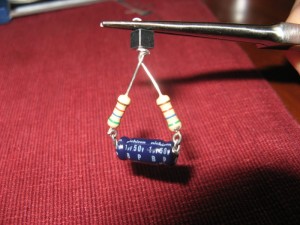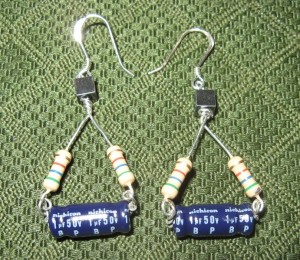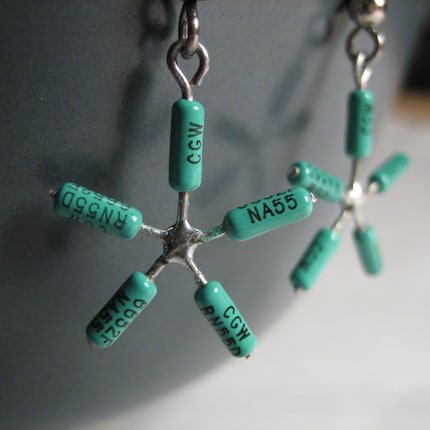June 19th, 2010 at 11:28 pm (History, Society)
Today was not only the day before Father’s Day, but also a day to commemorate the end of slavery in the United States. Inspired by a brief note on NPR this morning, I learned that June 19, or “Juneteenth”, is a holiday that originated in Texas and is now observed by 35 states (including California but not including Utah). President Lincoln’s Emancipation Proclamation took effect in 1863, but Texas was a hold out, and eventually 2,000 troops (!) had to be sent out to Texas in 1865 to enforce the Proclamation. Wikipedia relates that “legend has it” that General Granger read this statement aloud on June 19:
The people of Texas are informed that, in accordance with a proclamation from the Executive of the United States, all slaves are free. This involves an absolute equality of personal rights and rights of property between former masters and slaves, and the connection heretofore existing between them becomes that between employer and hired labor. The freedmen are advised to remain quietly at their present homes and work for wages. They are informed that they will not be allowed to collect at military posts and that they will not be supported in idleness either there or elsewhere.
June 19 has become Juneteenth, and it is apparently a vigorous annual celebration, in Texas and around the world.
I find it difficult to imagine what it would have felt like, as a slave, to learn that suddenly you had the same personal and property rights as your heretofore master. And it always gives me pause when I learn about some new slice of our country’s history that it then seems impossible not to have known. I hadn’t realized that it took years for the Emancipation Proclamation to have an effect throughout all the States. Given thought, some delay makes sense, since at the time merely getting the news out must have taken weeks or months. (We today are so used to instantaneous communication!) But the subsequent lag brings home more forcefully what an upheaval this decision was and how difficult it was to bring the country into alignment — by force, in some cases.
I hope that we never need federal troops to step in and force communities to recognize equal marriage rights for all humans.
Comments
June 18th, 2010 at 11:49 pm (Games, Psychology, Society)
FarmVille is, I hear, some kind of game one plays on Facebook. Well, not just one; the game has over 82 million active users as of May 2010. I’ve never tried it myself, so I don’t really know what makes it so fun or addictive. And although I knew of it in passing, I thought it was confined to Facebook.
Not so.
 FarmVille (and its sister games such as Mafia Wars) have entered the real world, the one that you and I live in, through (of all places) 7-11. I was driving along a week ago when I noticed this billboard. That’s right, if you buy a Slurpee, you get a “virtual gift” in the FarmVille world. The gift turns out to be 200 “FarmVille dollars.” Am I the only one who finds this utterly bizarre? I’m aware that people buy and sell virtual goods for real dollars in Second Life. I know that some MMORPG players pay others real dollars to generate game commodities like experience points or gold. But for these virtual objects and services to obtain a “real world” value, they have to reach a certain level of social dissemination and perceived value in a large real-world community. And certainly, 82 million people is a large community — I hadn’t realized just how many people were playing this game.
FarmVille (and its sister games such as Mafia Wars) have entered the real world, the one that you and I live in, through (of all places) 7-11. I was driving along a week ago when I noticed this billboard. That’s right, if you buy a Slurpee, you get a “virtual gift” in the FarmVille world. The gift turns out to be 200 “FarmVille dollars.” Am I the only one who finds this utterly bizarre? I’m aware that people buy and sell virtual goods for real dollars in Second Life. I know that some MMORPG players pay others real dollars to generate game commodities like experience points or gold. But for these virtual objects and services to obtain a “real world” value, they have to reach a certain level of social dissemination and perceived value in a large real-world community. And certainly, 82 million people is a large community — I hadn’t realized just how many people were playing this game.
I now wonder how much of an incentive 200 $FV is. What’s that worth to anyone? Is there an exchange rate with USD? To those of you who’ve played FarmVille: would the promise of 200 $FV be enough to persuade you to buy a Slurpee?
2 Comments
0 of 2 people learned something from this entry.
June 15th, 2010 at 10:36 pm (Crafts)
I have the simplest, lowest level of Netflix service: 2 DVDs per month, 1 out at a time. Even so, I can barely keep up with that rate of consumption, since I find so little time for movie watching! And even at just two DVDs per month, I feel a little sadness about waste every time I tear off the paper flap on the new DVD’s envelope and drop it in my recycling bin.
But no more! The folks at Netflix Origami have a bunch of origami designs specially adapted for use with the non-square Netflix flap. For example, there is the Elegant Swan. After following their very clear instructions, and step-by-step photos, I obtained this:

Netflix menagerie, here I come! Slowly!
3 Comments
2 of 2 people learned something from this entry.
June 10th, 2010 at 10:28 pm (French)
The homework for today’s French Pronunciation class was to memorize a French poem stanza or two to share with the class. I settled on the first 8 lines of “Aux arbes“, by Victor Hugo:
Aux arbres
Arbres de la forêt, vous connaissez mon âme!
Au gré des envieux, la foule loue et blâme;
Vous me connaissez, vous! – vous m’avez vu souvent,
Seul dans vos profondeurs, regardant et rêvant.
Vous le savez, la pierre où court un scarabée,
Une humble goutte d’eau de fleur en fleur tombée,
Un nuage, un oiseau, m’occupent tout un jour.
La contemplation m’emplit le coeur d’amour.
Who knew that Victor Hugo had a taste of Thoreau in him? Here’s my translation:
To the trees
Trees of the forest, you truly know my soul!
Moved by envy, the pressing crowd praises and blames;
But you know me, you! You have seen me often
Alone in your depths, gazing and dreaming.
You’re well aware of how a stone on which a beetle runs,
A humble drop of water falling from flower to flower,
A cloud, a bird, can keep me busy all day.
This kind of contemplation fills my heart with love.
You can join the class and listen to my recitation of Aux arbres (feel free to critique so I can improve!). Or have a computer read it to you with virtualfrenchtutor.com!
2 Comments
1 of 1 people learned something from this entry.
May 29th, 2010 at 10:50 pm (Crafts, Engineering)
I always thought resistors had a certain chic appeal, with their banded color-codes. And so, during a recent trip to Radio Shack, I decided to pick up materials for making some ultra-geeky jewelry. It turns out that Radio Shack does still sell racks of electronic components, including resistors and capacitors.
Since I’ve never made any jewelry before, I appealed to a friend for a jewelry-making lesson. She’s made lots of her own necklaces, earrings, and bracelets, and showed up with books and magazines full of instructions and inspirations. She also brought lots of useful tools, mainly in the form of several different kinds of pliers and cutters. After playing around with the components a little to decide how to arrange them, we got to work.
 I learned how to shape the wires coming out of the ends of the components into little rings so they could be connected. I gripped the wire with the rounded pliers and used another pair to tightly wrap the wire into a circular shape. After snipping the end of the wire, I used the pliers again to bend the sharp, free end in towards the component so it wouldn’t poke or snag. While the tools are great, I can see that it takes some experience to get used to using them most effectively (I kept wanting to put them down and work with my less precise but more familiar fingers instead).
I learned how to shape the wires coming out of the ends of the components into little rings so they could be connected. I gripped the wire with the rounded pliers and used another pair to tightly wrap the wire into a circular shape. After snipping the end of the wire, I used the pliers again to bend the sharp, free end in towards the component so it wouldn’t poke or snag. While the tools are great, I can see that it takes some experience to get used to using them most effectively (I kept wanting to put them down and work with my less precise but more familiar fingers instead).
 My jewelry-crafting friend came up with the clever triangular arrangement and donated the hematite cubes that serve as the join point. The cubes didn’t have a hole large enough to pass both wires through, so we put one through and twisted the second one around the first, which was the most technically difficult part of this assembly.
My jewelry-crafting friend came up with the clever triangular arrangement and donated the hematite cubes that serve as the join point. The cubes didn’t have a hole large enough to pass both wires through, so we put one through and twisted the second one around the first, which was the most technically difficult part of this assembly.
We determined that the wires attached to the resistors and capacitors served quite well as jewelry wire, although apparently it is somewhat more flexible than is typical. However, I wouldn’t want to stick it in my ear (resistance wire is made from a nickel/chromium alloy which could irritate the skin of those with a nickel allergy), so we connected the earrings to sterling silver earwires.
Those are 1-μF capacitors. I wonder how many of my readers can specify the resistance of the resistors? (As a reference, here’s the resistor color code.) And in case you’re curious, here’s more info about how resistors actually work or how capacitors actually work.
Other cool ideas:



5 Comments
3 of 4 people learned something from this entry.






